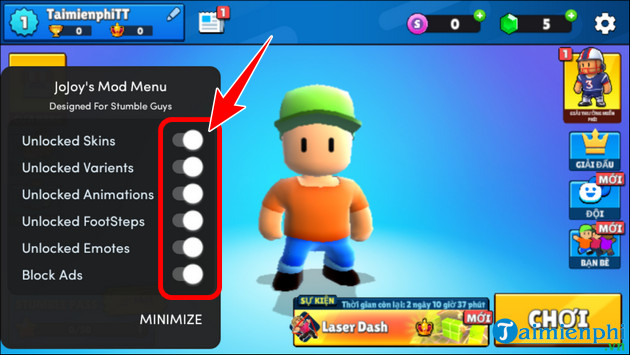
The Pizza Edition
Introduction to The Pizza Edition
Pizza is one of those universally beloved foods that transcends borders, cultures, and even dietary preferences. Whether you enjoy it as a quick weeknight meal, a celebratory dinner, or even a guilty pleasure after a night out, pizza has a way of bringing people together. When we talk about The Pizza Edition, we’re not just talking about a dish; we’re exploring an entire experience—a celebration of flavors, history, and creativity.
At its core, The Pizza Edition is about more than dough, sauce, and cheese. It’s about tradition meeting innovation. From the streets of Naples to the bustling food trucks in New York, pizza has adapted, evolved, and reinvented itself in countless ways. Each “edition” of pizza, whether it’s a thin crust, deep dish, or gourmet wood-fired creation, tells a story of the people and places behind it.
This article will take you through the layers of pizza’s journey, from its humble beginnings to its modern-day status as a global culinary superstar. Along the way, we’ll dive into styles, trends, and even the psychology behind why humans can’t seem to resist a hot, cheesy slice.
The Origins of Pizza: The First Edition
The history of pizza is often traced back to Italy, more specifically Naples, where the classic Neapolitan pizza was born. But the truth is, flatbreads with toppings existed long before that. Ancient civilizations such as the Greeks, Egyptians, and Romans baked bread with oils, herbs, and even cheese on top. These early versions may not have looked like today’s pizza, but they set the foundation for what was to come.
In the late 18th century, pizza began to resemble what we recognize today. It was street food for the working class of Naples—affordable, portable, and filling. The use of tomato, once thought to be poisonous in Europe, changed everything. Combined with fresh mozzarella and fragrant basil, the iconic Margherita pizza was born. Legend has it that the Margherita was created in honor of Queen Margherita of Savoy, symbolizing the colors of the Italian flag: red tomatoes, white mozzarella, and green basil.
What made this first edition of pizza so significant was its accessibility. It wasn’t a meal reserved for the wealthy; it was for everyone. This democratic nature of pizza has persisted through the centuries, making it not just a food but a cultural equalizer.
The Pizza Edition Around the World
One of the most fascinating aspects of pizza is how it has been embraced and transformed globally. Each region has put its own twist on the classic, creating a variety of editions that reflect local tastes and ingredients.
In the United States, New York and Chicago have long competed for pizza supremacy. The New York slice, known for its foldable thin crust, is perfect for eating on the go. Meanwhile, Chicago’s deep-dish pizza is more like a pie—thick, cheesy, and loaded with toppings. Both are beloved, but they couldn’t be more different.
Travel further, and you’ll find Japan’s edition of pizza topped with mayonnaise, seafood, or even corn. Brazil prefers pizzas with unique toppings like hearts of palm and catupiry cheese. In India, you’ll encounter spiced-up versions with paneer, tandoori chicken, and curry flavors. The Pizza Edition in each country is like a passport to its culture—familiar yet distinct.
The Science of Why We Love Pizza
The appeal of pizza isn’t just cultural—it’s biological. Scientists have studied why pizza is so universally adored, and the answers lie in a combination of chemistry and psychology.
First, there’s the umami factor. Ingredients like cheese, tomatoes, and cured meats are packed with glutamates, which stimulate our taste buds and give us that savory, mouthwatering satisfaction. Then, there’s the perfect balance of flavors: sweet tomato sauce, salty cheese, tangy toppings, and sometimes even a little spicy kick. Add in the chewy texture of dough with a crispy edge, and you’ve got a sensory masterpiece.
On a psychological level, pizza is also associated with positive emotions. It’s often shared among friends and family, making it a comfort food that carries happy memories. Birthdays, movie nights, sports games, and late-night cravings—all of these moments are made better with pizza. The Pizza Edition is not just about taste—it’s about the emotions tied to it.
Modern Innovations in The Pizza Edition
Pizza may have a long tradition, but that hasn’t stopped chefs and home cooks from experimenting with new ideas. In fact, modern editions of pizza are some of the most creative the world has ever seen.
Gluten-free and cauliflower crusts have made pizza accessible to those with dietary restrictions. Vegan cheese and plant-based toppings have ensured that even non-dairy eaters can indulge. Some adventurous chefs are even creating dessert pizzas with Nutella, fruits, and marshmallows.
Technology has also shaped pizza. From apps that let you customize every topping to robotic pizza makers, the way we order and eat pizza has changed dramatically. The Pizza Edition in today’s world isn’t just about what’s on the pie—it’s about how we interact with it.
Pizza as a Social Connector
Few foods hold the social power that pizza does. Think about it: when someone says “let’s order pizza,” it rarely gets objections. Pizza naturally brings people together, whether it’s in an office meeting, at a birthday party, or during a night in with friends.
The reason pizza works so well as a social food is its versatility. Everyone can customize their toppings, making it easy to satisfy different tastes. It’s also convenient—no utensils required, just grab a slice and go. Even the act of sharing a pizza box creates a sense of community.
In this sense, The Pizza Edition is not just about flavors or history—it’s about human connection. Pizza has become a universal symbol of togetherness, something we crave both for its taste and for the experiences that come with it.
The Pizza Edition in Pop Culture
Pizza isn’t just food—it’s an icon. From movies like Teenage Mutant Ninja Turtles, where pizza is practically another character, to countless memes on social media, pizza has embedded itself into popular culture.
Celebrities endorse it, Instagram feeds celebrate it, and entire YouTube channels are dedicated to reviewing different styles of pizza. It’s no longer just a meal; it’s a lifestyle statement. Wearing a pizza-print shirt, sharing pizza-themed jokes, or even attending a pizza festival has become part of how people express their love for this dish.
The Pizza Edition in pop culture has amplified its status from a humble dish to a global superstar. It represents indulgence, fun, and sometimes even rebellion against rigid food norms. After all, who doesn’t love the idea of having pizza for breakfast?
The Future of The Pizza Edition
So, what’s next for pizza? The future looks as exciting as ever. With sustainability becoming a major concern, we’re already seeing eco-friendly editions of pizza made with organic ingredients, locally sourced produce, and sustainable packaging.
Fusion pizzas are also on the rise. Imagine a sushi pizza topped with sashimi and wasabi mayo, or a Mediterranean edition with hummus, olives, and feta. The possibilities are endless, and chefs are continually pushing boundaries to keep pizza fresh and exciting.
Even in the digital space, pizza has a future. With virtual reality restaurants, AI-driven recommendations, and drones delivering hot slices, The Pizza Edition is set to evolve in ways we can hardly imagine.
Conclusion: Why The Pizza Edition Will Always Matter
Pizza has come a long way from its humble beginnings in Naples, yet its charm remains timeless. The Pizza Edition represents more than food—it symbolizes creativity, adaptability, and connection. Each new variation adds another chapter to its story, ensuring that pizza remains relevant no matter how much the world changes.





